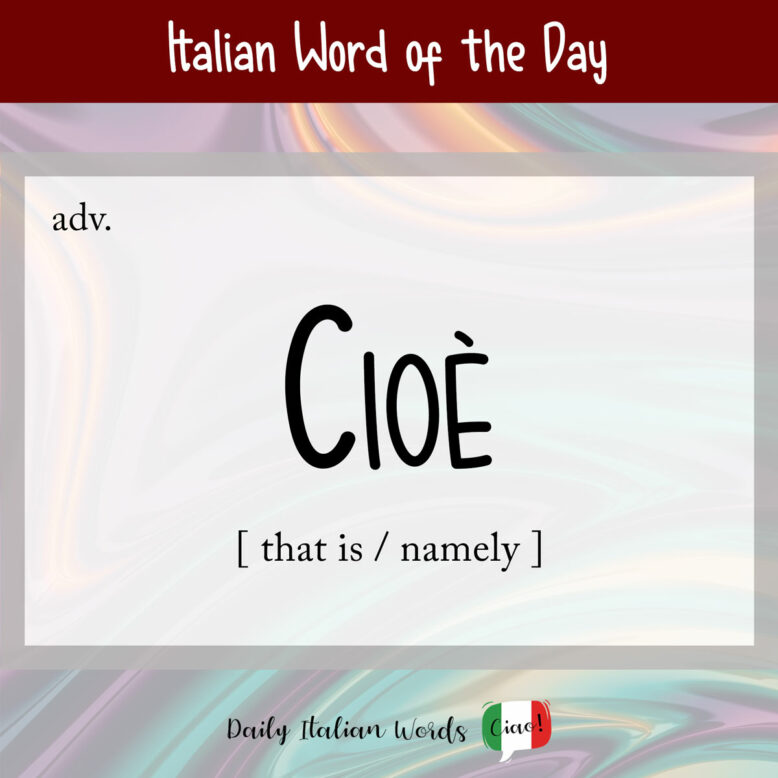Today we’re going to talk about a little word with a very big meaning: the adverb cioè. It is a fusion of the pronoun ciò (this, that) and è, which is the verb essere (to be) conjugated in the third person singular of the present tense.

Cioè is used to introduce detailed information, a correction of something already said or a specific example, much like the following English expressions:
- that is (to say) – when you want to give further details or be more exact about something
- namely – when you want to give a specific example or introduce additional information
- in other words – when you want to clarify a statement
- rather – when you want to correct what’s been said
Parliamo delle partite giocate dalla Juventus in casa, cioè a Torino.
We’re talking about the games played by Juventus at home, that is, in Turin.

Abbiamo imparato molto sui grandi felini, cioè leoni e tigri.
We learned a lot about the big cats, namely lions and tigers.
Ho usato un chilo di farina, cioè tutto il pacco.
I used one kilogram of flour, or in other words, the whole packet.
Ha risposto a tutte le domande, cioè, a quasi tutte.
He answered all the questions, or rather, almost all of them.

Cioè can also be used with an interrogative tone in response to a statement that requires clarification or elaboration as in the following example:
Ho una domanda da farti. – Cioè…?
I have something to ask you. – And that would be…?
In everyday speech, cioè is also used (and some might even say overused) as a filler, a word that allows us to take the time to gather our thoughts about what we want to say next. It corresponds to a number of English fillers including I mean, like and you know.
Cioè… non volevo farlo ma non avevo altra scelta.
I mean… I didn’t want to do it but I didn’t have a choice.
Important: Because it tends to be said very quickly, it may sound like the speaker is saying c’è (there is) rather than cioè.
Heather Broster is a graduate with honours in linguistics from the University of Western Ontario. She is an aspiring polyglot, proficient in English and Italian, as well as Japanese, Welsh, and French to varying degrees of fluency. Originally from Toronto, Heather has resided in various countries, notably Italy for a period of six years. Her primary focus lies in the fields of language acquisition, education, and bilingual instruction.


